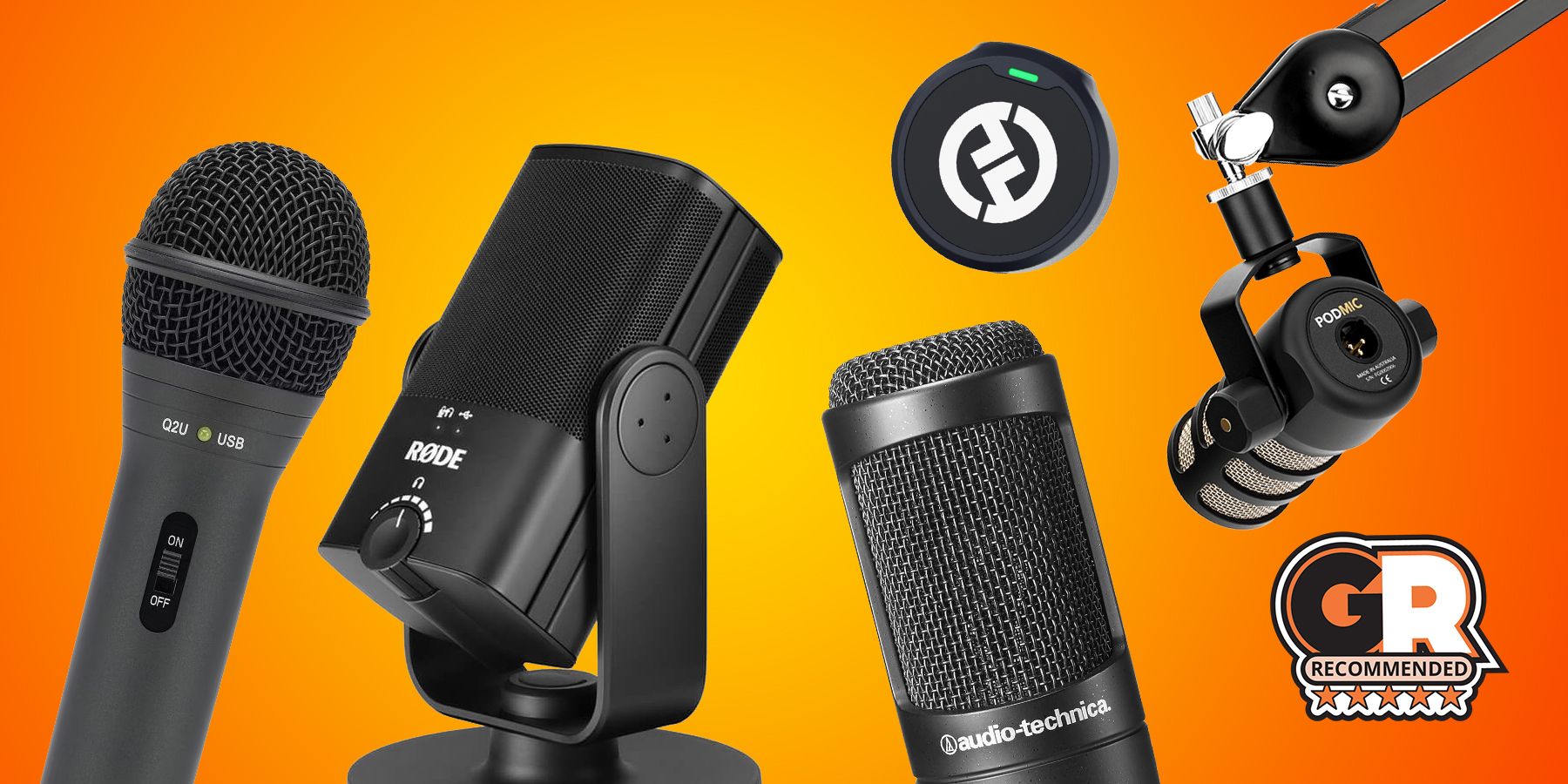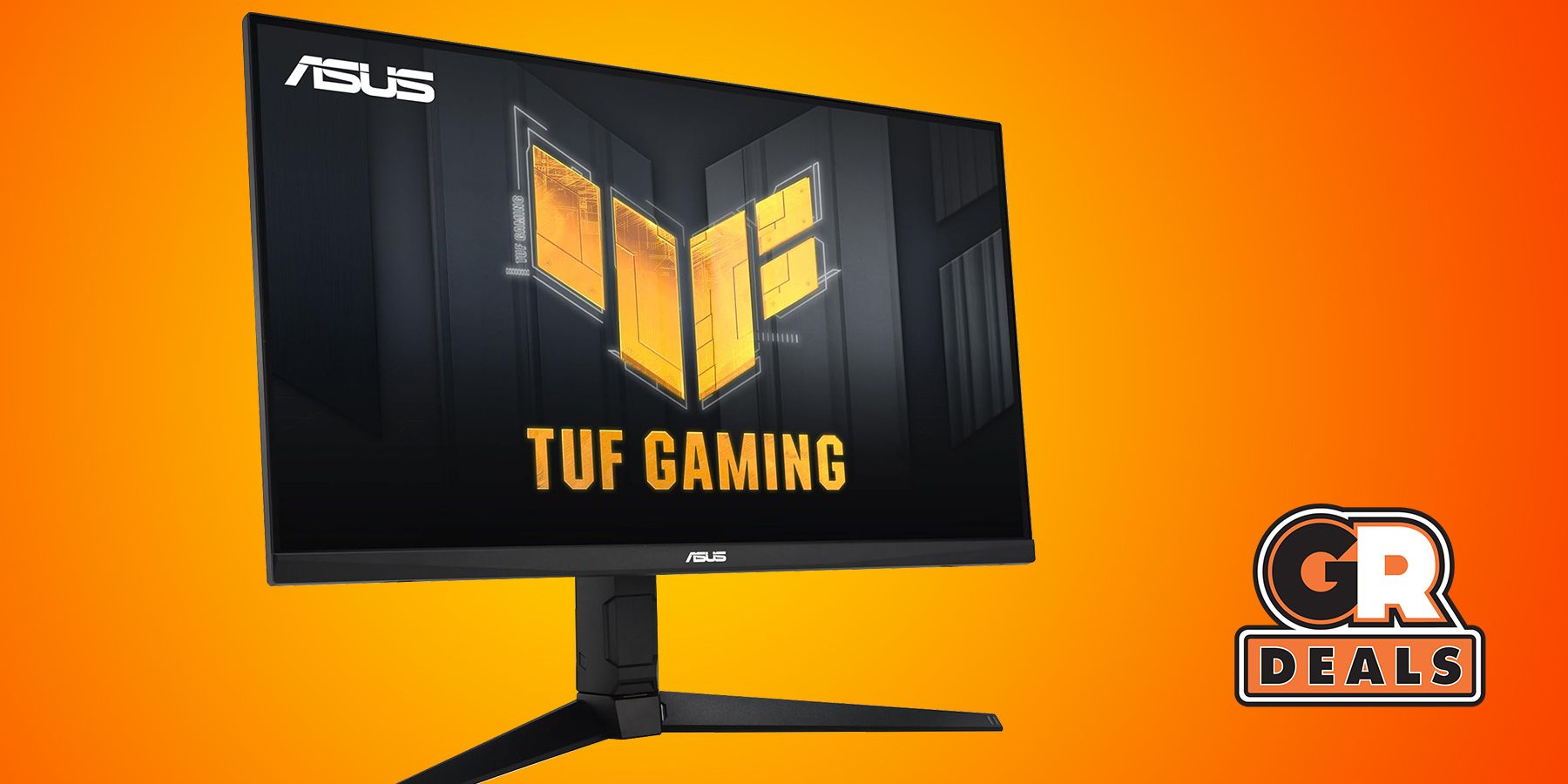After deciding on the topic of a podcast, the second most crucial thing to choose is the gear that will be used to record it. While every piece of gear is essential to building an excellent podcasting setup, the first thing that people should decide on is the microphone. Good audio quality can make or break a podcast, so choosing a microphone that provides professional sound is essential.
Of course, now that everyone and their mother has a podcast, microphones aimed towards podcasting have become way more prolific than ever before, so the choice is not that easy. Luckily, to help cut out the chaff, Game Rant has put together the best of the best microphones for podcasting.
-
Rode PodMic
Best Overall Microphone For Podcasting
-

Samson Q2U Dynamic Microphone
Best Budget Microphone For Podcasting
-

Rode NT-USB Mini USB
Best Mid-range Microphone For Podcasting
-
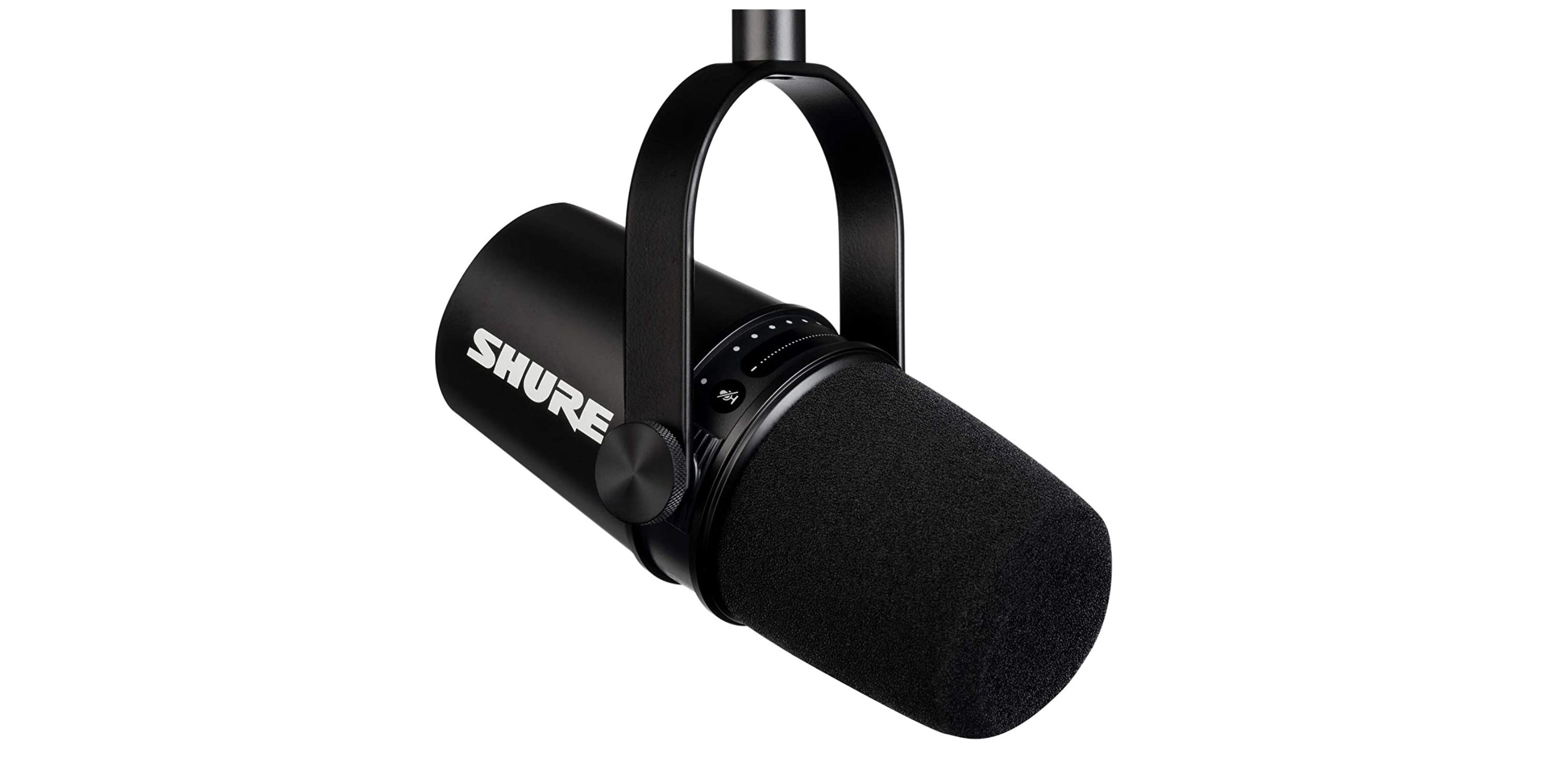
Shure MV7 USB Microphone
Best Premium Microphone For Podcasting
-
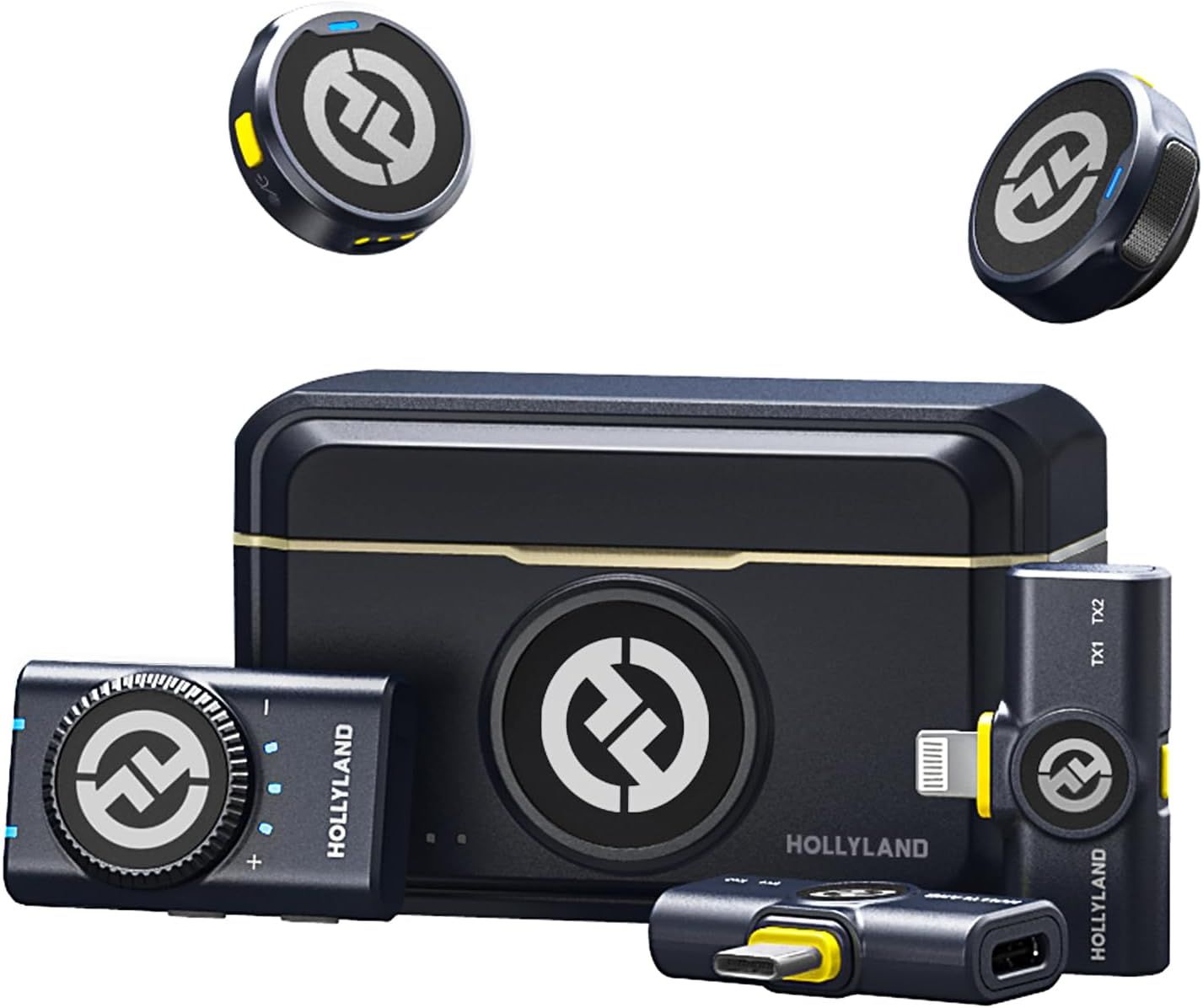
Hollyland Lark M2 Wireless Lavalier
Best Wireless Microphone For Podcasting
Key Factors For Choosing The Best Microphone For Podcasting
- Show Format: Unlike streamers, people looking to record a podcast must consider the type of show they plan to record. Some shows just have one person recording in a room at a time, others have groups of people all in the same room, and some might have multiple people, but it is recorded through video calls with everyone using their own setup. While each format doesn’t necessarily need to use different kinds of mics, it is crucial to consider. Especially for people purchasing a set of microphones, they should all be the same so no one sounds different in the recording.
- Type Of Microphone: The type of microphone is the first thing on the specs list that people should use to narrow down the massive list of results. Mostly, people will run into two types of microphones: condenser and dynamic. Condenser microphones are what most podcasters and creators use, but they tend to work best in treated rooms, whereas dynamic microphones still sound excellent and work well in untreated and treated rooms.
- Connectivity: How the microphone connects to the setup helps determine if people need another piece of equipment or not. For people wanting a plug-and-play experience, a USB microphone would be best. However, if people already have an XLR interface or are willing to pick one up, XLR mics will typically yield better results and an easier upgrade path down the road.
The Best Microphones For Podcasting in 2024
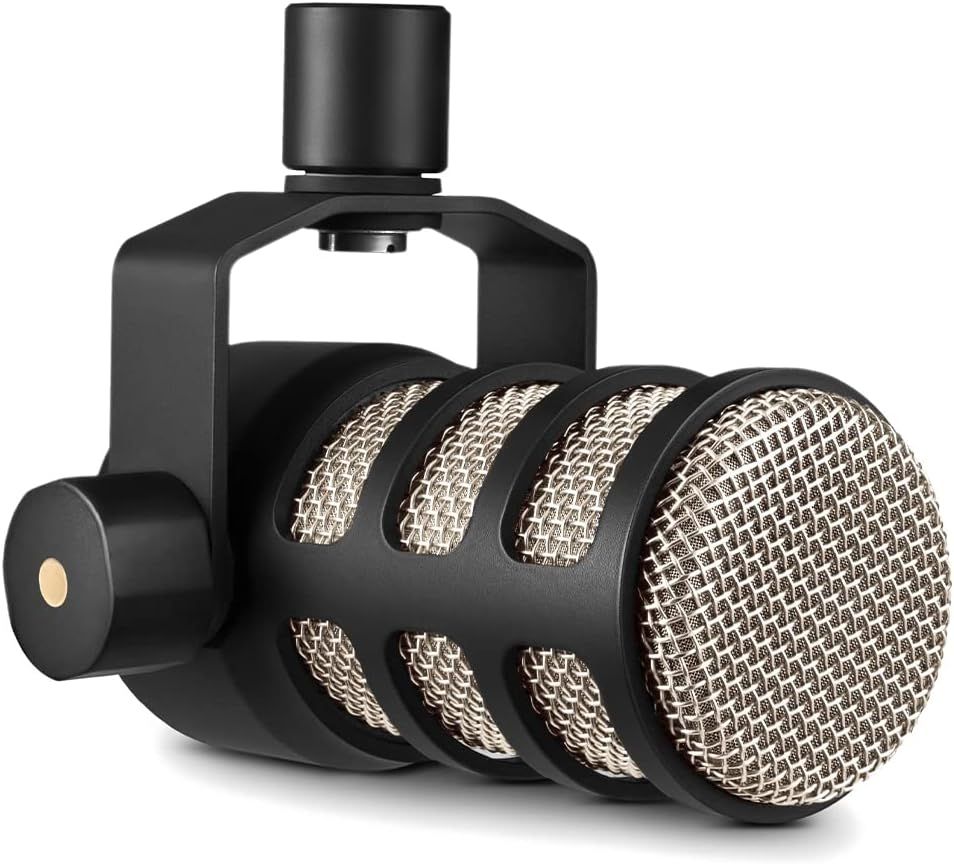
Rode PodMic
Best Overall Microphone For Podcasting
The PodMic is a broadcast-quality dynamic microphone optimized for incredible performance in podcasting, live streaming, and any other recording needs. With a rich, full-bodied sound, an internal pop filter for minimizing plosives, an internal shock mount for reducing vibrations, and mounting for a swing arm, the Rode PodMic is an excellent mic for anyone looking to upgrade their sound quality.
- Type
- Dynamic
- Pattern
- Cardioid
- Power
- Not required
- Connector
- XLR
- Frequency Bandwidth
- 20Hz ~ 20kHz
- Sensitivty
- -57.0dB
- Clear natural sounding vocals
- Built-in damping and pop filter
- Versatile mounting options
- Professional looks
- Need to buy stand separately
- XLR output is not ideal for beginners
Since the podcast craze started, Rode has been right there, making excellent microphones for various use cases. Even with its impressive list of microphones, the Rode PodMic excels for podcasting and is easily one of the best options for anyone looking to get into podcasting. At $99, this microphone is pretty affordable and produces professional-sounding results. Plus, it looks terrific in any setup, too.
The Rode PodMic uses the timeless design of the stocky-looking studio microphone. Whether mounted on a boom arm or a tabletop stand, this microphone looks fantastic and gives off that professional air that not all microphones have. The all-metal build feels very premium to the touch, and the hinge mount is not too loose or stiff, so it’s easy to move around.
The PodMic is designed with the needs of podcasters first and foremost, and its sound quality definitely delivers on this. The vocals sound clear and natural, and thanks to the internal pop filter, plosives are pretty well handled. Although for the best results,, that will need the least post-processing, Game Rant recommends picking up a pop filter regardless of the quality of the mic.
While this microphone is excellent for beginners, with it only having an XLR output, people who pick this up will have to get an XLR interface to use this microphone on their PC. This limits its plug-and-play ability, but adding an XLR interface to a setup is never a bad idea. If people ever want to upgrade to a higher-quality microphone, already having an XLR interface provides a much easier upgrade path.

Samson Q2U Dynamic Microphone
Best Budget Microphone For Podcasting
The Samson Q2U is a dynamic microphone that offers a podcast-like sound. Thanks to its cardioid pick-up pattern, this mic will pick up very little background noise. It can be used via USB cable for a PC plug-in-play experience or via XLR cable into an audio mixer. The Q2U also has a built-in headphone output for monitoring levels.
- Brand
- Samson
- Type
- Dynamic
- Pattern
- Cardioid
- Audio Sensitivity
- 50Hz-15kHz
- Connector
- XLR and USB Mini-B
- Sensitivty
- -54 dBV/Pa
- Dimensions
- 7.5″ x 2.2″
- Very affordable
- Excellent sound quality
- Both XLR and USB outputs
- Doesn’t create noise when handling the microphone
A quality microphone for podcasting doesn’t have to cost a fortune, and the Samson Q2U is an excellent example of why. Whether people are just starting their podcasting journey or are seasoned podcasters looking for a more affordable option, the Q2U provides impressive recording quality and versatility, which is hard to beat at this price range.
Unlike most of the microphones in this guide, which are condenser microphones, the Q2U is a dynamic microphone that uses a cardioid microphone. This means it is very good at picking up the sound directly in front of the capsule and not much else around it. So, this microphone will deliver excellent results for people with a mobile podcasting setup or recording in an untreated room. However, Q2U is much more sensitive to plosives than the Rode PodMic, so stay a bit further away from the capsule and invest in a pop filter.
Like the Shure MV7, the Q2U has both XLR and USB outputs, but the Q2U comes at a much lower price point. Having both outputs makes this microphone super easy to use whether people have an XLR interface or not. However, it would be nice to see the micro-USB port changed out for a USB-C port if there is a second iteration of the Q2U.

Rode NT-USB Mini USB
Best Mid-range Microphone For Podcasting
The NT-USB Mini brings the pristine sound quality of RØDE’s world-class studio mics to a compact, easy-to-use USB microphone. This small microphone is perfect for gamers, podcasters, or just anyone who wants to sound their best wherever they are.
- Type
- Electret condenser
- Pattern
- Cardioid
- Connector
- USB-C, 3.5mm Audio jack
- Frequency Bandwidth
- 20 Hz – 20 kHz
- Bit-depth
- 24-bit
- Sample rate
- 48 kHz
- Easy to use
- Good audio quality
- Headphone jack for monitoring
- Can easily be setup for group recording with no need to use a mixer
- Gain-heavy audio
- No gain knob on the microphone
The Rode NT-USB has been a long-time fan favorite for quite some time, but the Rode NT-USB Mini is the perfect choice for people looking for a more compact and modern solution. This compact little microphone is incredibly premium and delivers fantastic recording quality for a very reasonable price.
With its plug-and-play USB-C connection, this microphone is incredibly easy to set up whether people are in a home recording studio or on the go with their laptop. Because of how small the microphone is, it is pretty heavy, but the weight feels excellent in the hand and gives that premium feeling. While the included stand is very much appreciated, the height is hard to work with most of the time, and people will have to adjust to the microphone instead of being able to adjust the microphone to their position.
Despite its ease of use, the quality of the recording sounds very professional. Compared to most gaming headset microphones and built-in microphones, the NT-USB Mini is leagues ahead, but unfortunately, it doesn’t compete with larger studio microphones. Although, at this price point and form factor, it is not really expected to.

Shure MV7 USB Microphone
Best Premium Microphone For Podcasting
Shure MV7 USB Microphone is a high-end, standalone mic built for podcasting and recording live streams of gaming or other content. The all-metal, dual USB/XLR mic promises to last through hours of use and future upgrades to other audio equipment, such as dedicated mixers. With a sizable boom and built-in audio processing, the Shure MV7 is one of the best mics for crisp and professional vocal delivery.
- Brand
- Shure
- Type
- USB, XLR
- Power
- Corded Electric
- Weight
- 2.31 pounds
- Dimensions
- 4.3 x 12.3 x 5 inches
- Superb audio quality
- Excellent companion software
- Both XLR and USB outputs
- Great build quality
- Fairly expensive
- Micro-USB output
Premium microphones can get quite expensive, but at a certain point, the price does not match the performance provided, especially for podcasting. While the Shure MV7 is pricy, it is in the lower range for premium microphones. Like the Samsun Q2U, the MV7 has both XLR and micro-USB outputs, which is lovely to see on a microphone of this level. Most of the time, premium microphones only have XLR outputs, so beginners looking to get studio-quality sound are out of luck. Whether using the XLR or micro-USB output, the MV7 sounds excellent.
It is hard to beat the MV7’s sound quality, no matter the experience level of the person using it. Whether people use it in manual mode and pick one of the preset EQs, make their own, or use it in auto mode, this mic produces natural-sounding vocals that are incredibly crisp and clear. This microphone can even record instruments or louder sources, unlike the Samson Q2U.
The MV7 has a very similar design to its bigger sibling, the SM7B, but with more onboard controls, making it more accessible to use without adding a full mixing board. Instead of physical designs like the Blue Yeti, the MV7 uses a touchscreen panel that can control the gain level and a mute toggle. To access further controls, users must use the ShurePlus MOTIV app, which is not ideal, but the app is straightforward to navigate.

Hollyland Lark M2 Wireless Lavalier
Best Wireless Microphone For Podcasting
Weighing just 9g, the LARK M2 wireless Lavalier microphone is the lightest mini microphone on the market. Its lossless sound reproduction and top-of-the-line recording capabilities bring you unmatched recording performance in an incredibly small package. Each mic can last up to 10 hours on a single charge, and the case can be used to recharge them twice, giving a total of 40 hours of recording time.
- Type
- Wireless Lavieler
- Pattern
- Omindirectional
- Battery
- 40 hours
- Weight
- 9g
- Frequency Bandwidth
- 20 Hz–20 kHz
- Analog Outputs
- Yes
- Bit-depth
- 24-bit
- Sample rate
- 48 kHz
- Discrete transmitters
- Magnetic attachment
- Works on Android, iPhone, or any input with 3.5mm mic jack
- Long transmission distance
- No onboard recording feature
- No extra magnets included
Wireless microphones are not always the first choice for podcasters, but interview-type podcasts are super easy to position and incredibly compact, especially in the case of the Hollyland Lark M2. Wireless microphones have gone through a renaissance lately; with every part getting smaller, sound quality getting better, longer battery life, and prices that are way more accessible, there has never been a better time to invest in a wireless microphone setup.
The Lark M2 is a tiny package, with the transceivers only weighing 9 grams, that produces fantastic audio. This tiny button-sized microphone has an impressive range of 300 meters and produces very clear and natural-sounding vocals. Plus, the magnetic securing mechanism makes it incredibly easy to mic someone up, even if they are not wearing a shirt with a collar or lapel. However, with how small the magnets are, they can be pretty easy to lose.
The combo kit, the most expensive option, comes with two mics and three different receivers to connect it to iOS or Android devices and any device with a 3.5mm microphone jack. But for people who need one connection option, the cheaper options still come with two mics but just one receiver. The only downside of the Lark M2 over options like the Rode Go II wireless microphones is that there is no way to record on the microphones internally.
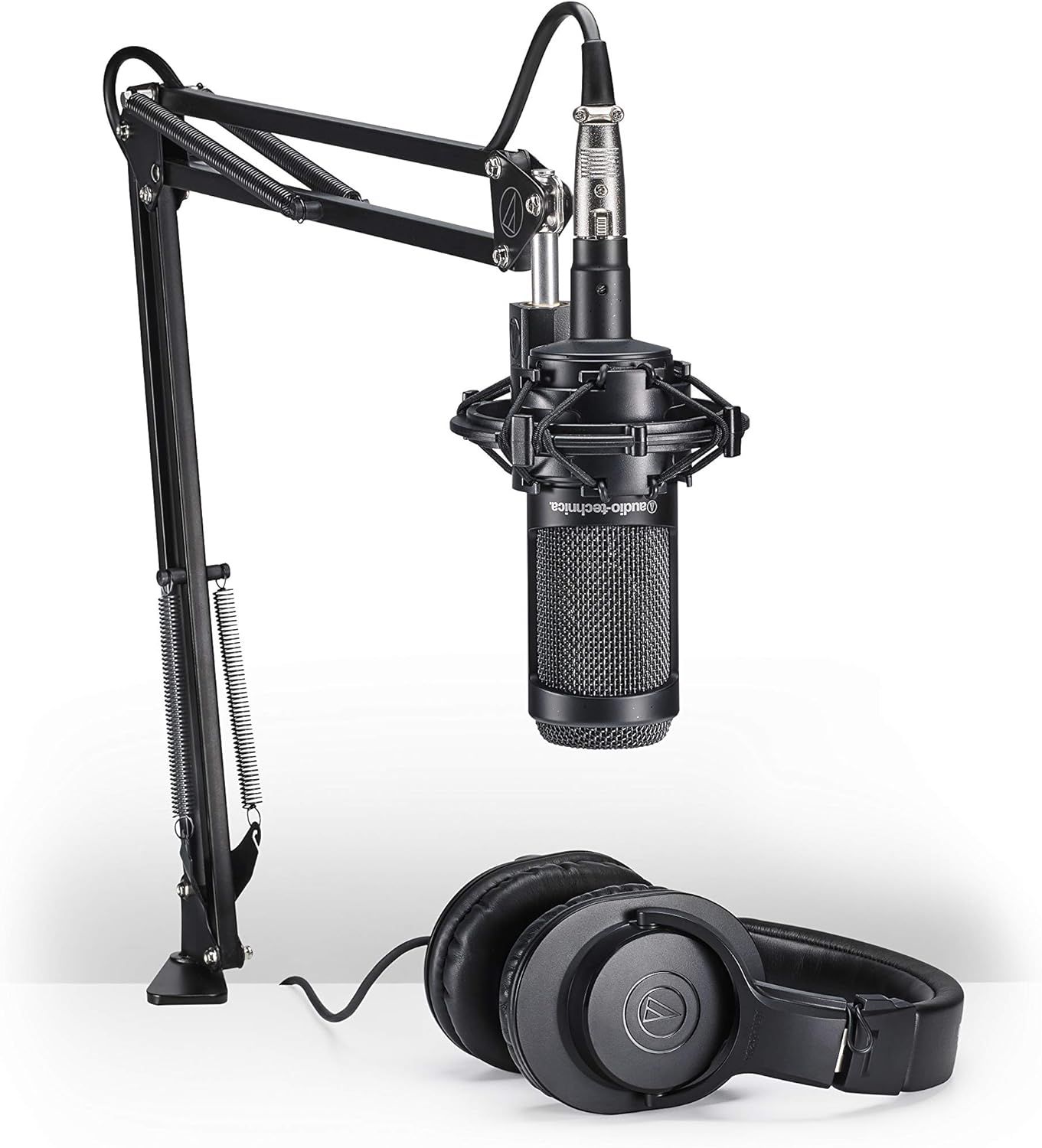
Audio-Technica AT2035PK
Best Starter Kit For Podcasting
The AT2035PK vocal microphone pack is designed for streamers, podcasters, and other content creators who need a versatile, easy-to-install, easy-to-adjust boom microphone setup. This pack comes with everything new podcasters need to start and sound amazing.
- Type
- Condenser
- Pattern
- Cardioid
- Audio Sensitivity
- -33 dB
- Connector
- XLR
- Frequency Bandwidth
- 20-20,000 Hz
- Excellent value
- Comes with everything a starting podcaster would need
- Suitable for vocals and instruments
- Easy to use
- Need to pick up an XLR interface
- The single polar pattern somewhat reduces its versatility
While all of these microphones in this guide are great options for beginners and pros, most are just the microphones themselves and not any other accessories needed for recording a podcast. That’s where Audio-Technica AT2035PK comes in with a complete kit to get started podcasting. Besides an XLR interface, this kit is one purchase that will get people the microphone itself, headphones to monitor the levels, an XLR cable, and a boom arm.
The AT2035 microphone has been around for quite some time now, and for years, it has been a go-to choice for many podcasters for its simple, robust design and superb audio quality. For podcasting, the condenser capsule does an excellent job of rejecting ambient noise and making the vocals crystal clear and natural. Plus, with the boom arm and shock mount, this microphone does a great job of not picking up any bumps or handling of the microphone.
The accessories that come with the AT2035 feel very premium, especially the Audio-Technica headphones, which are perfect for monitoring. While there are microphones out there that will deliver higher-quality results, it would be hard to find a kit like this that provides such excellent recording quality at this relatively affordable price point.
FAQ
Q: Is a dynamic or condenser mic better for podcast?
Condenser mics have a crisper and cleaner sound compared to a dynamic microphone. However, for podcasters who record at home in an untreated room, there is a more considerable risk of picking up unwanted background noise when using a condenser microphone.
Q: Is the iPhone microphone good enough for podcasts?
While the iPhone microphone can be used for podcast recording in a pinch, for a long-term solution, using an iPhone, or any phone, for that matter, is not ideal. However, if users pair the iPhone with a mic like the Hollyland LARK M2, using the lighting connection, mobile podcast recording will sound much better and even allow guests to join using the second mic transceiver.

/cdn.vox-cdn.com/uploads/chorus_asset/file/23598986/VRG_Illo_5258_K_Radtke_WWDC.jpg)
